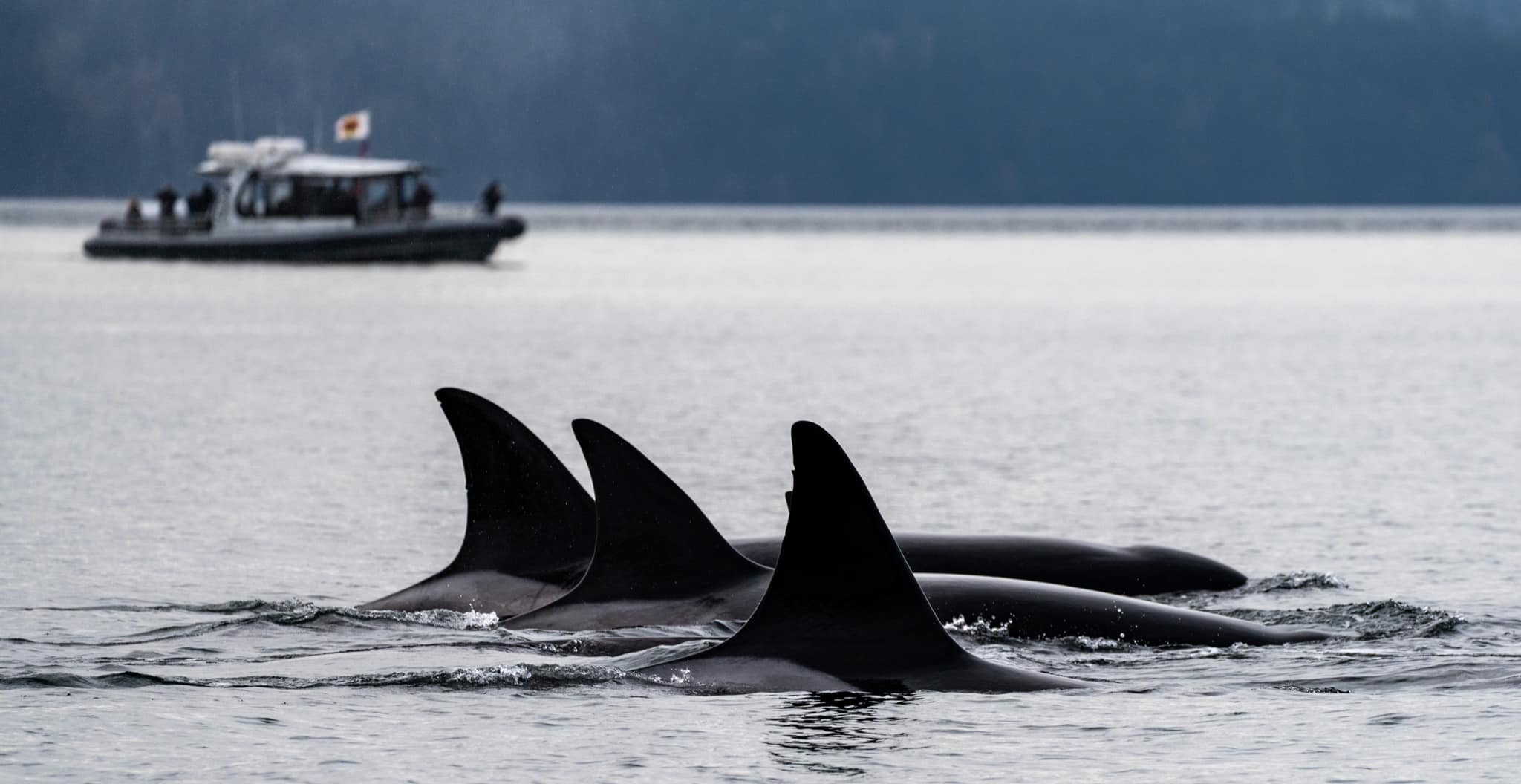
Regulations & Guidelines
The Pacific Whale Watch Association (PWWA) has been at the forefront of responsible ecotourism practices for decades. Since 1994, long before there were mandatory whale watching regulations, PWWA operators identified a need for whale watching standards across the Salish Sea and joined together to create the first voluntary guidelines to protect the region’s wildlife. These rules and guidelines have evolved over time as we learn more about whales and their behavior, but the PWWA’s commitment to sustainability has remained constant.
Viewing Distances
The rules for viewing whales in Washington and British Columbia are some of the most precautionary in the world. These regulations are complex and can differ depending on location, species of whale, and time of year. In addition, rules for professional whale watch operators can sometimes differ from those for recreational vessels. PWWA captains receive annual drivers training and are specifically licensed as commercial whale watching operators.
The Pacific Whale Watch Association primarily views Bigg’s killer whales, humpback whales, gray whales, minke whales, and Northern Resident killer whales. Our tours do not focus on endangered Southern Resident killer whales.
The viewing distance for most whales in the Salish Sea is 100 yards/metres. This includes the humpback whales, gray whales, and minke whales that we encounter frequently on our PWWA tours. In British Columbia, the viewing distance for whales who are resting or with calves is 200 metres.
The viewing distance for Bigg’s killer whales or Northern Resident killer whales in inland Washington waters is 200 yards and the distance for endangered Southern Resident killer whales is 1,000 yards. For inland BC waters, the viewing distance for all killer whales is 400 metres if you are in a recreational vessel. Trained professional whale watch vessels in BC are allowed to view the thriving Bigg’s and Northern Resident killer whale populations from 200 metres through Canada’s Sustainable Whale Watchers Authorization (SWWA) program. In exchange for this exemption, we do not view endangered Southern Residents. Exempt vessels will display a purple “authorized vessel” flag.
Reduced Speed
Numerous scientific studies show that speed is the most important factor in determining how much sound a vessel generates underwater. PWWA operators practice parallel viewing at slow speeds from safe distances so as not to disturb the whales’ natural behaviors. Through these respectful whale watching practices, we are rewarded with the ability to witness whales feeding, playing, resting, and mating in their natural habitat.
In Washington state, vessels may not travel at a speed of 7-knots or less within 1 kilometer of endangered Southern Resident killer whales. While this law applies only to Southern Residents in Washington waters, the PWWA promotes a 7-knot or less speed buffer around all whales in both Washington and British Columbia.
Additional Guidelines
In addition to following all state and federal laws regarding the viewing of marine mammals, Pacific Whale Watch Association operators also have additional guidelines to ensure we’re viewing wildlife sustainably.
Our operators utilize the private PWWA App to coordinate our whale watching activity and monitor the number of vessels viewing any one group of whales at a time. Other measures include adhering to special guidelines near marine protected areas, such as Race Rocks Ecological Reserve and the west side of San Juan Island.
Not all whale watch companies in our operating region are members of the PWWA. By booking a tour with a PWWA company, you can be confident you’re choosing an operator who is familiar with the region’s whale watching regulations and prioritizes the health of local whales and other wildlife.





